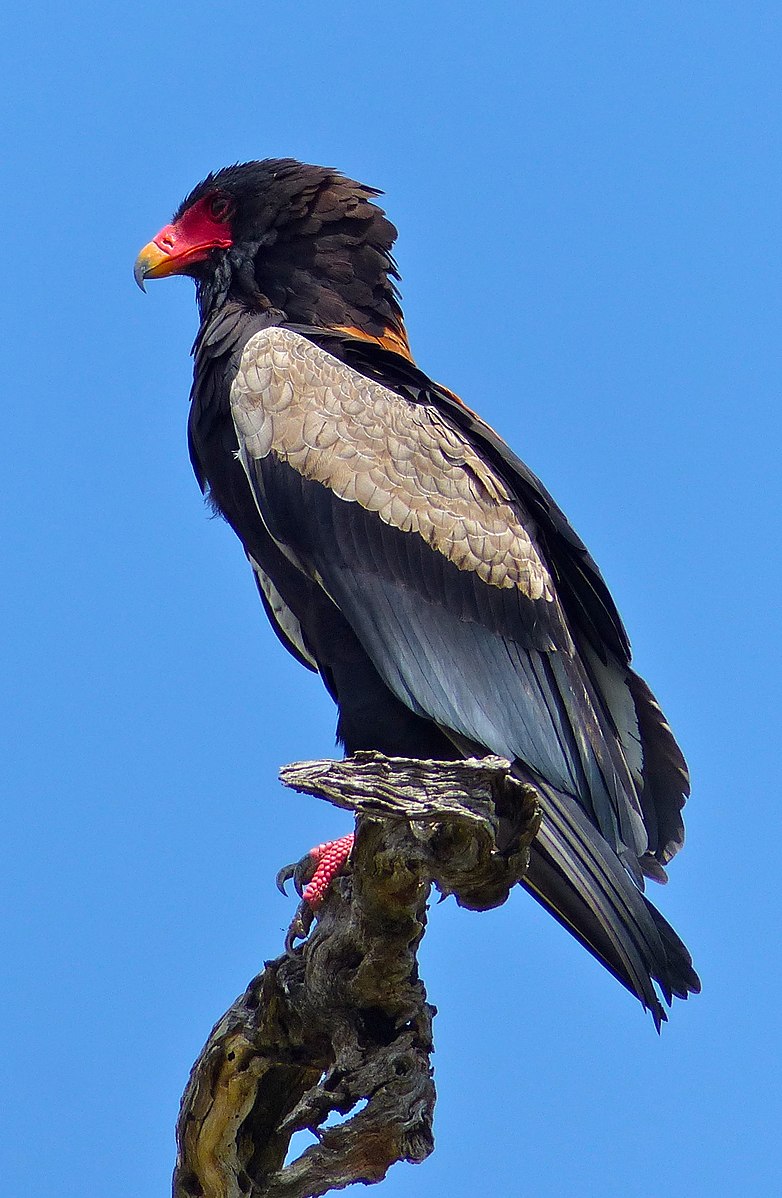Bateleur eagles are remarkable birds of prey, known for their unique appearance and fascinating breeding behaviors. The hatching process of their eggs is a critical aspect of their reproduction, and understanding this process can provide valuable insights into the ecology and conservation of these magnificent raptors.
The Breeding Season
Bateleur eagles typically lay their eggs between December and June, with a peak in February and March. These monogamous birds engage in complex aerial displays during their courtship, showcasing their agility and strength in the sky.
Incubation and Parental Care
 Image source: Bateleur Eagle By Bernard DUPONT
Image source: Bateleur Eagle By Bernard DUPONT
Bateleur eagles lay a single egg, which both parents take turns incubating for approximately 52-55 days. During this time, the parents are dedicated to keeping the egg warm and safe, with the male and female sharing the responsibilities.
| Incubation Period | 52-55 days |
|---|---|
| Egg Laying Period | December to June, with a peak in February and March |
| Parental Care | Both parents take turns incubating the egg and caring for the chick |
The Hatching Process
The hatching process can be a captivating sight to witness. The chick is born with a small egg tooth on its beak, which it uses to break open the eggshell. This process can take up to 48 hours, as the chick slowly and carefully works its way out of the shell.
Once the chick has hatched, the parents continue to provide care and protection, with both the male and female sharing the responsibilities of feeding and guarding the young. The chick is dependent on its parents for at least four months, during which time it develops its adult plumage, which is typically achieved by the age of 5-6 years.
Unique Behaviors
Bateleur eagles are known for their unusual behaviors, such as raising their crest and puffing up their chest feathers to display their agitation or excitement. These behaviors can be observed during the breeding season and when the parents are caring for their young.
Threats and Conservation
Bateleur eagles face several threats, including habitat loss, poisoning, and accidental drowning in farm reservoirs. These threats can have a significant impact on their populations, making conservation efforts essential for the survival of these magnificent birds.
Conclusion
The bateleur eagle’s egg hatching process is a captivating and intricate aspect of their reproduction. By understanding the details of this process, we can gain valuable insights into the ecology and conservation of these remarkable birds of prey. As with any species, it is crucial to continue studying and protecting bateleur eagles to ensure their long-term survival.


